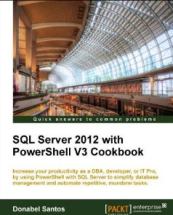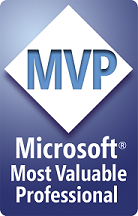Some of my projects are still in SSRS 2005 and PowerShell v1.0, so this script works and is tested on this environment only, for now.
I plan to port this to SSRS2008, PowerShell v2.0 when I get the chance.
I don’t think the code will change much; although one major change would be how I’m creating the proxy right now. PowerShell v2.0 has a cmdlet called New-WebServiceProxy.
To get this to work for PS v1.0, for now, I use New-WebServiceProxy.ps1 from
http://poshcode.org/538 to create the proxy.
Steps are fairly simple
1. Create the proxy
2. Create an array of policies (ie existing users/groups for a particular report or folder)
3. Create a new policy
4. Create a new role, and add it to your policy
5. “Re”-set your policies — ex $reportserverproxy.SetPolicies($itempath,$newpolicies);
#Other .NET programs use ReportService2005.ReportService2005 object #However there is no ReportService2005.dll. #The library is called "ReportingServicesLibrary.dll" located in #"<install directory>Program FilesMicrosoft SQL Server #MSSQL.3Reporting ServicesReportServerbin" #make sure this is in just one line :) [System.Reflection.Assembly]::LoadFrom("D:Program FilesMicrosoft SQL Server MSSQL.3Reporting ServicesReportServerbinReportingServicesLibrary.dll") $server = "POSEIDON"; $uri = "http://$($server)/ReportServer/ReportService.asmx?WSDL"; #PowerShell v2.0 has a cmdlet called New-WebServiceProxy #Right now for PS v1.0, to get a proxy I use # New-WebServiceProxy.ps1 from http://poshcode.org/538 $command = "C:PowerShellNew-WebServiceProxy.ps1 $uri " $reportserverproxy = Invoke-Expression $command #Below is the C# version of creating the proxy, in case you're interested #rs = new ReportingService2005(); #let's start with one report for now $itempath = "/Sales/Sales Report by Date Range"; #this will hold all the group/users for a report $newpolicies = @() $inherit = $true; #this gets all users who currently have access to this report #need pass inherit by reference $policies = $reportserverproxy.GetPolicies($itempath, [ref]$inherit) #this will automatically break inheritance #also note that when you programmatically mess #with policies, you will need to "re-add" users that were #already there, if you want them to keep on having access #to your reports foreach ($policy in $policies) { $newpolicies += $policy } #this new "Policy" type is loaded from ReportingServicesLibrary.dll $newpolicy = New-Object "Policy" $newpolicy.GroupUserName = "DOMAINjdoe"; #if you want to prompt the user, you can use Read-Host #a policy must have roles $newrole = New-Object "Role"; $newrole.Name = "Browser"; #add the role to the policy $newpolicy.roles += $newrole #check if this user already exists in your policy array if ($($newpolicies | %{$_.GroupUserName}) -notcontains $newpolicy.GroupUserName) { $newpolicies += $newpolicy; } #set the policies $reportserverproxy.SetPolicies($itempath,$newpolicies); #done #check your report now :) |









[…] ExecutionLogStorage. If you’re still using PowerShell v1, check out my other blog post on programmatically adding users/groups using PowerShell. That PowerShell script will work on […]